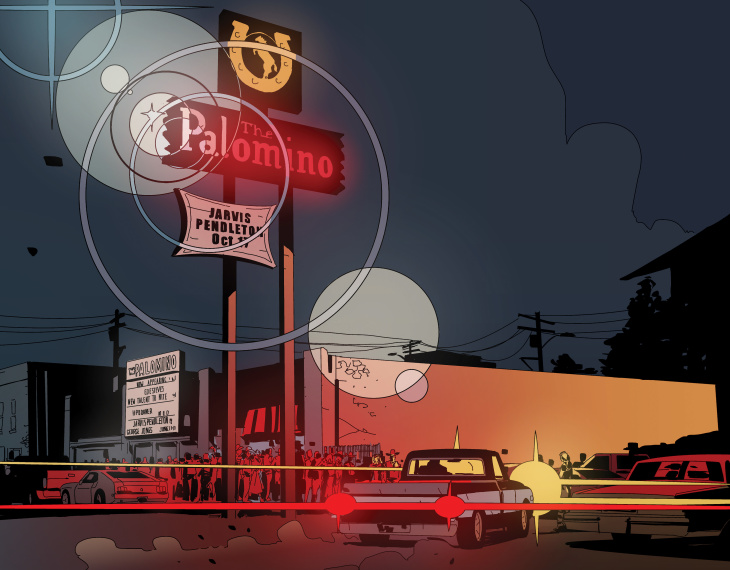
Our news is free on LAist. To make sure you get our coverage: Sign up for our daily newsletters. To support our non-profit public service journalism: Donate Now.
It's a hard time to launch a Kickstarter, but artist/writer/animator Stephan Franck had a story rooted in L.A. history that he wanted to tell — and wanted to help keep the struggling comic book industry alive during the coronavirus pandemic.
"The stores are closing, the distribution chain is stopped, publishers are shutting down their production because they have nowhere to sell the books," Franck told LAist. "If I was canceling the Kickstarter, all I'm doing is canceling a job for a printer, that then will not be there for me on the other side of this."
Franck's best known for working on acclaimed animated movies like Spider-Man: Into The Spider-Verse and The Iron Giant, and he's also the head of animation on new Marvel Cinematic Universe cartoon What If...? But he's telling a story where he has control of the whole process with his new comic, Palomino, a neo-noir story set in the early 1980s country music club scene. At that time, L.A.'s country music clubs could draw 900 people on a weeknight, Franck said. His book is set around North Hollywood's real-life, now-defunct Palomino Club.
"That was a place where you had this convergence of the music scene coming from this country-western era, but also the hippie scene," Franck said. "You're in the Valley, and you have the other side of Hollywood — all the TV culture, TV actors, the stuntmen."
The cowboy loomed large in popular culture at the time, with Franck noting that it went from Kenny Rogers on the charts to cowboy actor Ronald Reagan in the White House.
VIRTUALLY REBUILDING A COUNTRY MUSIC CLUB

To set his story in that scene, Franck took photos of key locations and looked at old photos of places that don't exist anymore. He used his skills as an animator to build CGI models of almost every location, including a club called The Palomino.
The Palomino's a banquet hall now, but it's the same structure, with the same sign, stage, and floor plan. Franck went and shot photos everywhere, then used them to build a computer model of the location. He did it to help ground the larger-than-life story, Franck said.
"It gives you the specificity and the consistency that you need," Franck said. "Once I have the set in CG, then I can block out the sequence like I would do for a movie, and go scout for the best angles I can find. And it brings almost a ... cinematic quality that sets the stage for better performance from the characters — even though I'm drawing them."
He's bringing that polished, particular process from his animation work to Palomino in other ways, including shooting his reference photos with an anamorphic camera lens, helping to give his drawings the feel of late '70s/early '80s cinema, according to Franck.
FRANCE MEETS AMERICA
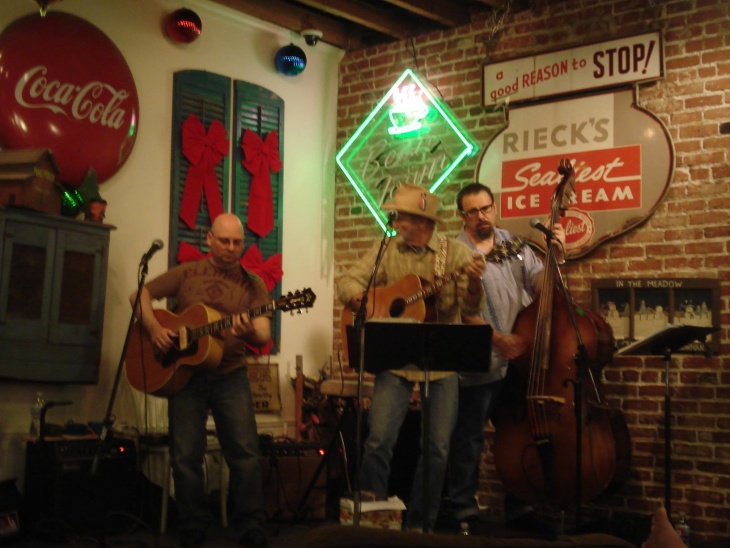
He's a musician himself, which is part of what drew Franck to this material. He's also a country music fan who grew up on the '80s rockabilly revival in his native France. He remembers the impact of reading the liner notes to an Emmylou Harris album.
"It said they really want to capture the spirit of the California honky-tonk. And I was like, 'California honky-tonk'... what the heck is that?!" Franck said.
He came to the United States as part of the animation boom of the 1990s, falling in love with L.A. the moment he stepped outside LAX's Tom Bradley Terminal.
"I grew up on the outskirts of Paris — everything was very gray and small," Franck said. "You can walk into a bar in L.A., and just talk to the person next to you randomly, and chances are they have an incredible story to tell."
He played clubs around the L.A. country scene, he said, but after its peak — and the closure of the Palomino.
"It was definitely the afterglow of what it had been from the 1930s to the late '80s," Franck said. "But it was still active, still in existence. And I got to become friends, and play, and work with all those amazing musicians."
GETTING PERSONAL IN A DIFFERENT MEDIUM
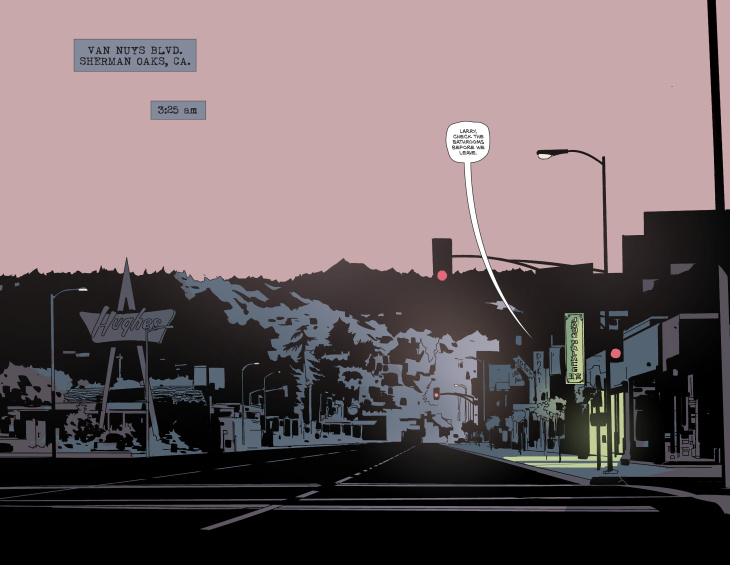
Franck uses comic books to tell more personal stories than his animated work, and often darker ones.
"With animation, you obviously have the pleasure of seeing your stuff come to life on the big screen, and the production value is extremely satisfying," Franck said. "From comics, [it's] the authorship — whatever I feel I need to explore at the moment, I just have the full freedom to do it."
Though the comic convention experience may be changing because of to the current pandemic, the world of comics also allows him to connect with his audience in a more tangible way Over the last five years, he's had the chance to talk with a lot of fans one-on-one — and thinks he's shaken more than 100,000 hands.

While he loves the California country music scene, the part that's most personal for Franck is the father/daughter story of its characters in the context of L.A. His youngest child just graduated college, so he saw Palomino as a chance to look back at his own time as a parent.
"That question that is eternal — what is it to be a parent? Am I good at it? Am doing more harm than good? Franck said. "The thing that made me the happiest about the book is that when my kids read it, they go, 'Oh, that makes me homesick — that's totally our life.'"
The fast-living culture of Palomino is one Franck thinks is directly relevant to our current moment.
"You're in 1981, you're playing the club, the party is going on — you have a strong middle class with all those union jobs, and the money's flowing, and the party seems like it's never going to end," Franck said.
Then the economy started to shift, with local industry moving elsewhere and the real-estate market cratering, Franck said.
"The reality that you can take your world for granted, that it can turn on you quicker than you think, is something that's always fascinated me," Franck said. "Palomino is also that story — it's the story of not knowing how thin the ice is that you're all standing on."
But Palomino is also a story about the hope of the next generation, with their whole life ahead of them, making it all work, Franck said.
You can find the Kickstarter for Palomino here. The comic has already been drawn, but Franck is looking for the Kickstarter to pay for printing costs — he's run several successful Kickstarters before. This book is the first in a planned four-part series.
Read a preview of the book's first seven pages below:
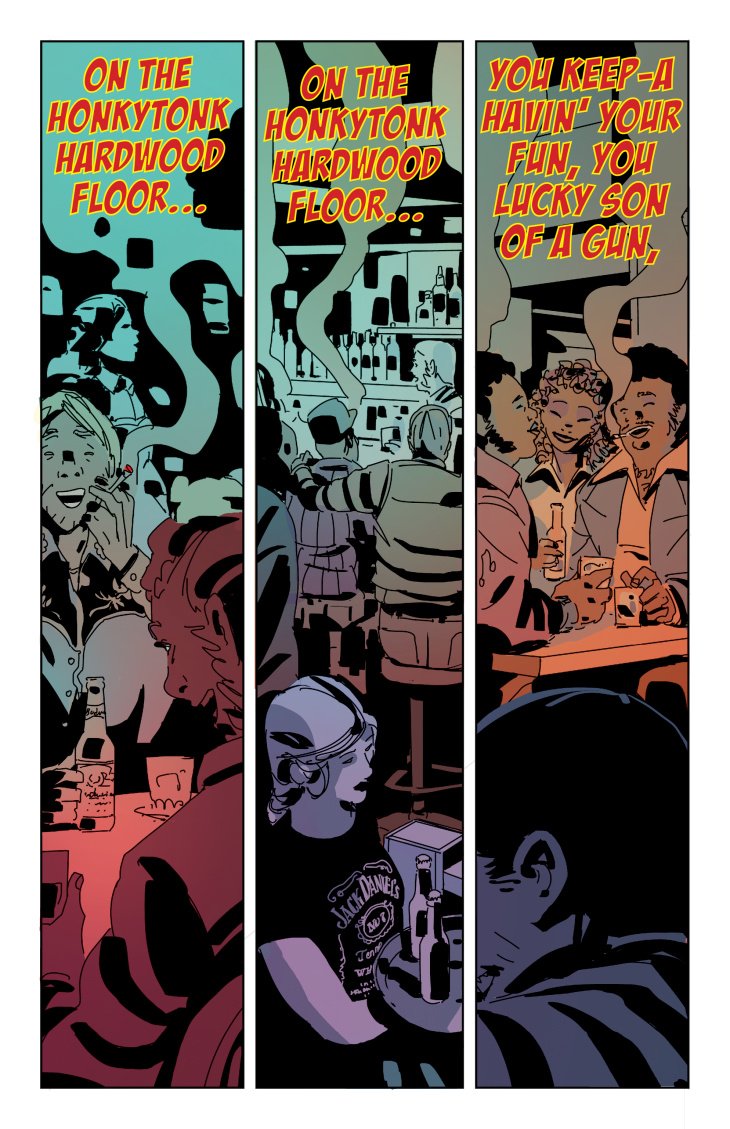
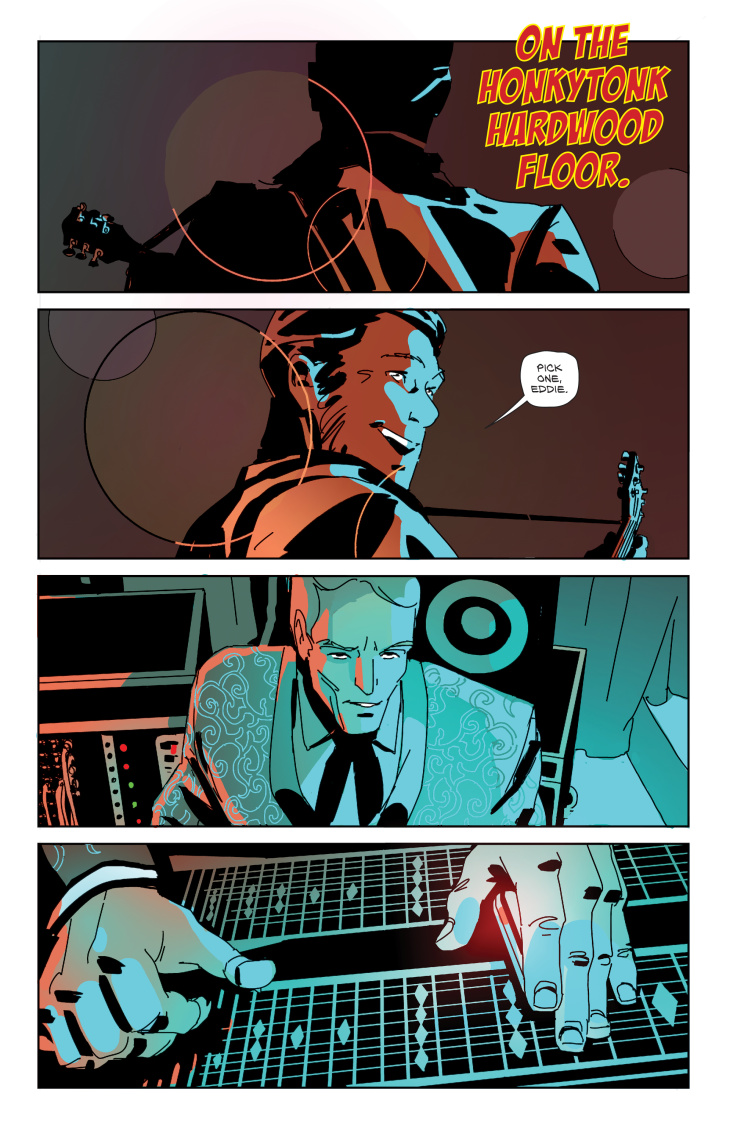
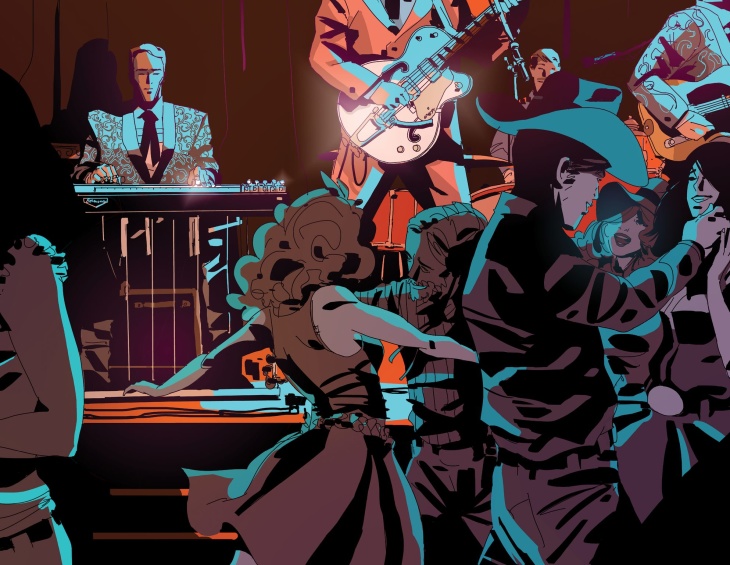
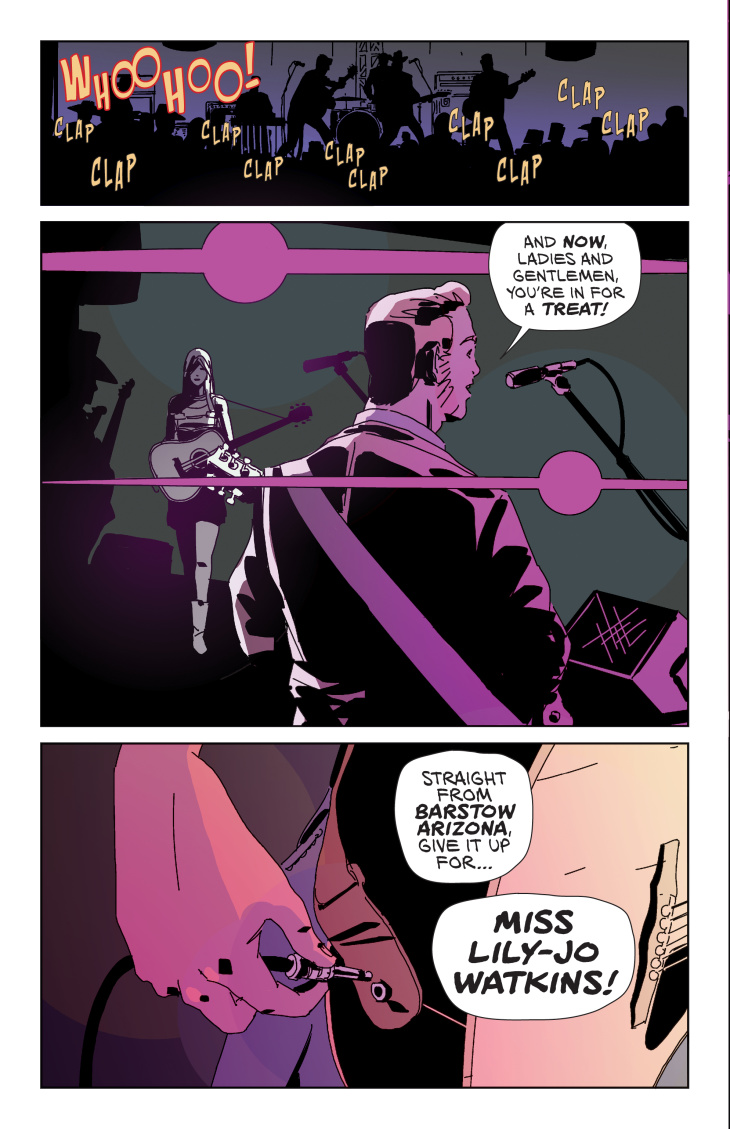

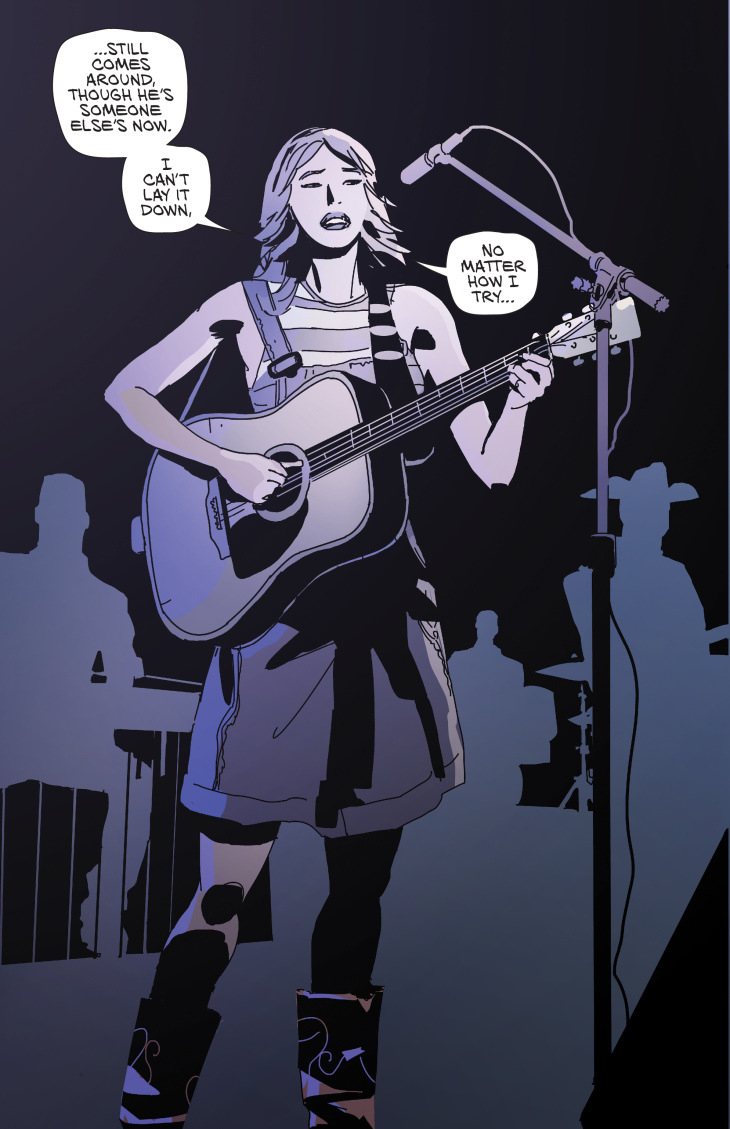
"bring" - Google News
April 18, 2020 at 05:12AM
https://ift.tt/3boKWFS
The Plan To Bring North Hollywood's 'Palomino' Country Music Club Back To Life — In Comic Form - LAist
"bring" - Google News
https://ift.tt/38Bquje
Shoes Man Tutorial
Pos News Update
Meme Update
Korean Entertainment News
Japan News Update
Bagikan Berita Ini














0 Response to "The Plan To Bring North Hollywood's 'Palomino' Country Music Club Back To Life — In Comic Form - LAist"
Post a Comment